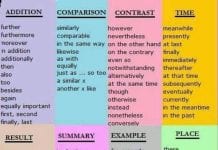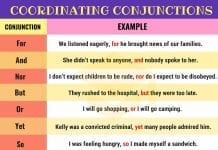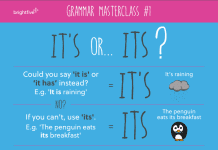Ready to do something VS ready to be doing something.
The main difference between to do and to be doing is the amount of time a person will spend with the action. To do is a present simple construction, whereas to be doing is a present continuous. We learned that the major difference between simple and continuous is the amount of time spent on the action.
To Do Meaning
When a person says they are ready to do something, their focus is on the task at hand. They are not bothered, and they don’t want to stress how long it will take.
For example:
- A: “Are you ready to start this project?”
- B: “I’m ready to do it.”
What the person is drawing attention to is that they do the action, in this case the project, from start to finish. The main focus is not the time.
To Be Doing Meaning
When using the continuous form, however, there is a distinct focus on time. The person using the continuous form wants to draw attention to the time-frame of the action.
For example:
- A: “We sure have a lot of homework.”
- B: “Yeah, I’m going to be doing it all afternoon:”
The continuous form is connected to an adverb of time in almost every case. Even when you try to not add a description of time, it almost comes natural.
For example:
- A: “Why are you still in the office?”
- B: “Lots of work. I’ll be doing it…”
We can see that something is missing in B. If we add “all night,” “until tomorrow morning,” or something similar, the sentence feels complete.
That is the main difference between “to do” and “to be doing.” One is focused on the action itself, and the other on the time it will take to finish it.
To Do and To Be Doing Explanation in German
Bereit, etwas zu tun VS bereit, etwas zu tun
Der Hauptunterschied zwischen “to do” und “to be doing” ist die Zeitspanne, die eine Person mit der Handlung verbringt. To do ist eine einfache Gegenwartskonstruktion, während to be doing eine kontinuierliche Gegenwart ist. Wir haben gelernt, dass der Hauptunterschied zwischen simple und continuous die Zeit ist, die man mit der Handlung verbringt.
Wenn eine Person sagt, dass sie bereit ist, etwas zu tun, konzentriert sie sich auf die anstehende Aufgabe. Sie sind nicht beunruhigt und wollen nicht betonen, wie lange es dauern wird.
Ein Beispiel:
A: “Sind Sie bereit, dieses Projekt zu beginnen?”
B: “Ich bin bereit, es zu tun.”
Was die Person hervorhebt, ist, dass sie die Handlung, in diesem Fall das Projekt, von Anfang bis Ende durchführt. Das Hauptaugenmerk liegt nicht auf der Zeit.
Bei der Verwendung der Verlaufsform hingegen liegt der Schwerpunkt eindeutig auf der Zeit. Die Person, die die Verlaufsform verwendet, möchte die Aufmerksamkeit auf den Zeitrahmen der Handlung lenken.
Ein Beispiel:
A: “Wir haben wirklich eine Menge Hausaufgaben.”
B: “Ja, ich werde den ganzen Nachmittag damit beschäftigt sein.”
Die kontinuierliche Form ist in fast allen Fällen mit einem Zeitadverb verbunden. Selbst wenn man versucht, keine Zeitangabe hinzuzufügen, ergibt sich das fast von selbst.
Ein Beispiel:
A: “Warum bist du noch im Büro?”
B: “Jede Menge Arbeit. Ich werde es tun …”
Wir können sehen, dass in B etwas fehlt. Wenn wir “die ganze Nacht”, “bis morgen früh” oder etwas Ähnliches hinzufügen, wirkt der Satz vollständig.
Das ist der Hauptunterschied zwischen “to do” und “to be doing”. Das eine konzentriert sich auf die Handlung selbst, das andere auf die Zeit, die es braucht, um sie zu beenden.
To Do and To Be Doing Explanation in Spanish
Listo para hacer algo VS listo para estar haciendo algo
La principal diferencia entre to do y to be doing es la cantidad de tiempo que una persona va a dedicar a la acción. To do es una construcción de presente simple, mientras que to be doing es un presente continuo. Hemos aprendido que la principal diferencia entre el simple y el continuo es la cantidad de tiempo que se dedica a la acción.
Cuando una persona dice que está preparada para hacer algo, su atención se centra en la tarea que tiene entre manos. No se molestan y no quieren hacer hincapié en el tiempo que les llevará.
Por ejemplo:
A: “¿Estás listo para empezar este proyecto?”
B: “Estoy listo para hacerlo”.
Lo que la persona está llamando la atención es que realiza la acción, en este caso el proyecto, de principio a fin. El enfoque principal no es el tiempo.
Sin embargo, cuando se utiliza la forma continua, hay un claro enfoque en el tiempo. La persona que utiliza la forma continua quiere llamar la atención sobre el marco temporal de la acción.
Por ejemplo:
A: “Seguro que tenemos muchos deberes”.
B: “Sí, voy a estar haciéndolos toda la tarde”.
La forma continua va unida a un adverbio de tiempo en casi todos los casos. Incluso cuando se intenta no añadir una descripción de tiempo, casi resulta natural.
Por ejemplo:
A: “¿Por qué sigues en la oficina?”
B: “Mucho trabajo. Lo estaré haciendo…”
Podemos ver que falta algo en B. Si añadimos “toda la noche”, “hasta mañana por la mañana” o algo similar, la frase parece completa.
Esa es la principal diferencia entre “to do” y “to be doing”. Uno se centra en la acción en sí, y el otro en el tiempo que se tardará en terminarla.
To Do and To Be Doing Explanation in Chinese
准备做某事VS准备做某事
做 “和 “正在做 “之间的主要区别在于一个人在这个动作上花费的时间。To do是简单现在时结构,而to be doing是现在时连续结构。我们了解到,简单和连续的主要区别是在行动上花费的时间。
当一个人说他们已经准备好做某事时,他们的注意力是在手头的任务上。他们并不烦心,也不想强调要花多长时间。
比如说。
A:”你准备好开始这个项目了吗?”
B:”我已经准备好了”。
这个人所提请注意的是,他们从头到尾都在做这个行动,在这种情况下,就是这个项目。主要的重点不是时间。
然而,当使用连续形式时,有一个明显的重点是时间。使用连续形式的人想引起人们对行动的时间范围的注意。
比如说。
A:”我们肯定有很多家庭作业。”
B:”是啊,我整个下午都要做:”
连续形式几乎在所有情况下都与时间副词相连。即使你试图不加时间的描述,它也几乎是自然而然的。
比如说。
A:”你怎么还在办公室?”
B:”很多工作。我就在做……”
我们可以看到,B中缺少一些东西。如果我们加上 “整晚”、”直到明天早上 “或类似的东西,这个句子就感觉完整了。
这就是 “做 “和 “正在做 “之间的主要区别。一个是关注行动本身,另一个是关注完成行动所需的时间。
Learn English
- Eat to live but do not live to eat
- 13 Other Ways to Say: Does it work for you?
- What does the prefix inter- mean?
- English Grammar Test with Answers
- What part of speech is SUCH? [Grammar]
- ❗️[QUIZ] Quite vs Quiet vs Quit Quiz & Answers ›› TEST YOURSELF! [GRAMMAR]
- Grammar: Not many people saw it vs. Many people didn’t saw it
- ✅ Is Grammarly Premium Worth it? 👉 Grammarly Alternatives
- Articles A – An – The (Definition & Grammar Usage & Quizzes) ✅
- Grammar or Grammer 💁♀️ What is the Right Spelling in USA, UK & Australia
Browse by category
A Adjectives B Business English C D dictionary E English grammar English Idioms English language English Learning Tips English phrases English teacher English Vocabulary English Vocabulary English words F G H how to learn english I idioms Infographic J L Learn English M N noun O P phrasal verb R S Skype T teach English Teaching English as a foreign language Text Abbreviations The Jungle Book tips U W Y
- Abbreviations
- acronyms
- Advanced English Lesson
- Adverbs
- Apps
- Arabic
- Articles
- Beginner English
- Books
- Business English
- Clauses
- Collocations
- Conjunctions
- Difference Between
- English Grammar
- English Idioms
- English Learning Tips
- English Questions and Answers
- English Speaking
- English Test
- English Videos
- English Vocabulary
- English Vocabulary Dictionary
- English Writing
- For Kids
- For Teachers
- French
- Games
- German
- Hindi
- Hungarian
- IELTS
- Infographics
- Intermediate English
- Italian
- Japanese
- Learn English
- Listening Skills
- Lyrics
- Names
- Phrasal Verbs
- Portuguese
- Prefix
- Prepositions
- Proverbs
- Q&A
- Quiz
- Quotes
- Russian
- Should
- Spanish
- Suffix
- Synonyms
- Teach English
- Technology
- Uncategorized
- Understanding
- Useful English learning websites
- Vietnamese
Latest comments

Hello. Thank you very much for the most detailed and clear explanation! Could you please comment on this sentence where…

“Hey there! Just wanted to send you a bunch of good luck vibes as you go for captain of the…

i need a good luck message for a teen trying out for captain of the drill team with the word…

Very useful for learning english language. Thank you!

thanks for post

























